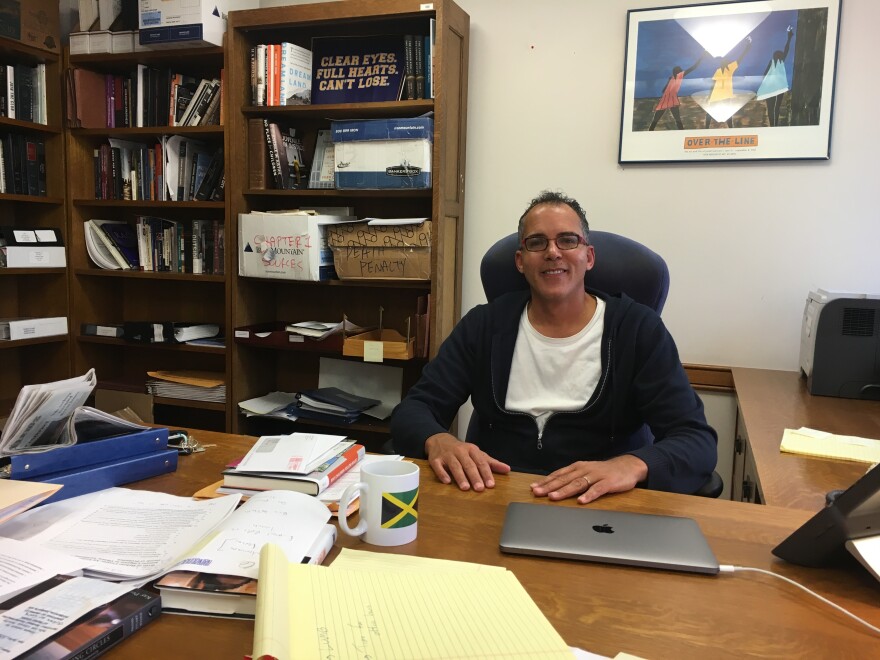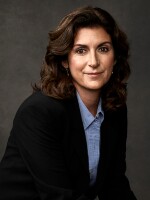This year’s Pulitzer Prize for general nonfiction went to former public defender, now Yale University law professor, James Forman, Jr. for his book Locking Up Our Own: Crime And Punishment In Black America.
The book examines mass incarceration and the disproportionate number of incarcerated black Americans since the civil rights era. Forman looks at the complexities of “tough-on-crime” policies through the lens of black elected officials, many of whom supported such policies. And he examines the unforeseen, unintended consequences those measures have had on African American citizens and communities.
How did you decide on this angle?
“Over the last 50 years as we’ve seen rising crime and as we’ve seen rising rates of incarceration and as we’ve seen addiction, what have the conversations about that looked like within the African American community? What have black judges, and elected officials, and prosecutors, and public defenders, and citizens — what have we been doing? Because it’s not just that we were on the sideline. We haven’t simply been silent.
“And so I wanted to write the story of 50 years through the eyes of a community that often gets marginalized or treated as a monolith. You know, ‘Oh here's the black perspective.’ But there is no black perspective. It's complicated and nuanced and people disagree and that's what I wanted to present.”
Is there a conclusion that you can draw from the book?
“Part of the story is that a lot of African American officials did get caught up in some of rhetoric and ideas and theories that have dominated America over the last 50 years. Some of the tough-on-crime mentality, some of the anger, lashing out at people who commit crime. And in the black community the form that can take is, 'Listen you are a threat to the rest of us.' You know, ‘You the criminal element,’ and I don't endorse that language, but this is the language that people use -- ‘You that are out there committing crimes, you're threatening the gains that the rest of us have made. And so there's a way in which we need to cut you off, or exclude you, or excise you from the larger black community.’ So that's one theme.
"The people that I write about, these black elected officials are trying to protect communities that are being ravaged by crime, but because of a history of limited resources that grows out of slavery and Jim Crow and redlining and segregation, African American communities don't have the same resources to protect themselves from crime without relying on police and prosecutors. So it's a story about what black elected officials did, but it's also a story about the ways in which their choices were constrained by the larger society."
What do you hope to accomplish with this book?
“I hope it will draw more attention to the problem that the U.S. has five percent of the world's population and 25 percent of its prisoners. And that can't be right. That cannot be a healthy state of affairs. It's also not economically in our interest.
“One of the groups that gets a lot of attention in this book is public defenders, who are a group that normally are marginalized in any conversation about criminal justice, the criminal justice system, what to do about it. Public defenders barely get a voice. Barack Obama, hero to so many of us, wrote a 60-page law review article at the end of his presidency about what to do about criminal justice, and the words ‘public defenders’ don’t appear in the article. And so I want to elevate the stories of public defenders and also the stories of our clients.
“I want people to see, even when people are working hard and struggling and trying to do the right thing, all the ways in which this prison juggernaut that we've built constricts and constrains and restrains, and in the name of safety is actually grinding up so many of our fellow citizens.”
One of the most important things to take away from the book...
"This is a system that was built with a series of small steps by individual actors across society. There's no part of America that is immune from having built this criminal justice juggernaut, and as a result we all have a responsibility to dismantle it and replace it with something that is more humane. And there is something that everybody can do. Every single person can decide that they're going to tutor or they're going to mentor somebody who is incarcerated or who's been incarcerated. Every single church and synagogue and mosque in America can decide that they're going take in people who are coming back from prison and they're going to adopt them and help them reintegrate into society.
"Every single voter can decide, 'I'm going to vote for local prosecutors and state representatives who are actually working to built restorative justice programs and build reintegration programs and end mandatory minimums.’ Every single one of us can do something."
Changes that are encouraging...
“We shouldn't forget that there have been some real success stories because of the work of activists. In the 1990s, we imposed in this country 350 death sentences a year. Last year it was 35.
“Juvenile incarceration rates have been cut in half nationally; in Connecticut even more than in half. A number of states -- Connecticut, New York, New Jersey, Texas, California -- have reduced their prison population by 20 percent and seen crime go down at the same time. So don't let anybody tell you that if we reduce the prison population that that means crime is going to go up.”
Forman draws from his experience as a public defender in Washington, D.C. He includes stories of the people he represented as well as the some of the struggles and concerns of many prominent black officials.





